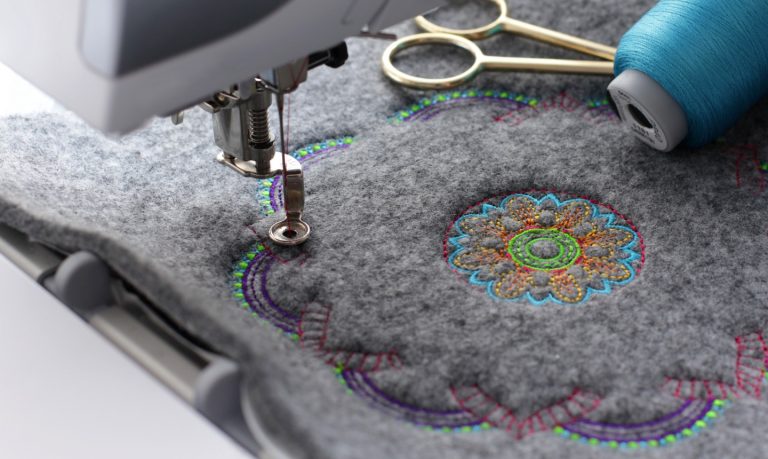Customized Digitizing for Embroidery: Tailored to Your Demands
Customized Digitizing for Embroidery: Tailored to Your Demands
Blog Article
Streamlining the Art of Needlework Digitizing: Step-by-Step Guide
As modern technology continues to development, the digitization procedure has actually become much more easily accessible, enabling fanatics to bring their complex layouts to life with convenience. In this overview, we will certainly unravel the complexities of needlework digitizing, damaging down each step carefully to simplify the process and encourage both newbies and skilled embroiderers alike.
Understanding Embroidery Digitizing Software Program
Needlework digitizing software functions as a vital tool for changing complex layouts into electronic styles compatible with embroidery makers, facilitating exact sewing and customization. This specific software application allows individuals to import various photo file formats, such as JPG or PNG, and convert them right into embroidery machine-readable layouts like DST, EXP, or PES - Digitizing for Embroidery. By using attributes like stitch modifying, rug options, and string shade selection, digitizing software program makes it possible for customers to manage every element of the style procedure
Additionally, advanced embroidery digitizing software offers devices for developing intricate designs, readjusting stitch thickness, and including detailed information. Users can likewise preview the style before stitching it out, ensuring precision and minimizing errors. Additionally, lots of software application provide automated features that assist streamline the digitizing process, saving effort and time.
Understanding the abilities of embroidery digitizing software is crucial for accomplishing high-grade cause needlework jobs. By understanding this device, embroidery fanatics and professionals can unleash their creative thinking and bring intricate designs to life with precision and performance.

Picking the Right Design Documents
After familiarizing on your own with the capabilities of needlework digitizing software program, the next important action in the procedure is choosing the ideal design declare your job. Digitizing for Embroidery. When selecting a design declare embroidery digitizing, it's necessary to take into consideration the complexity of the design, the size of the end product, and the kind of material you will be functioning with
For elaborate layouts with great details, a high-resolution image or vector file is suggested to make certain that the embroidery equipment can precisely recreate the layout. Additionally, the size of the end product plays a considerable role in selecting the right layout file. Bigger styles might need higher resolution data to maintain quality and sharpness.
Moreover, the kind of material you will be stitching on influences the choice of style file. Various fabrics may need modifications in the design documents to make certain that the stitches are correctly straightened and the design looks like planned. By carefully selecting the appropriate layout data based upon these elements, you can set on your own up for a successful embroidery digitizing procedure.
Digitizing Devices and Strategies
Making use of specialized software program and precision techniques, digitizing tools are vital in changing complex styles right into embroidery-ready files. Embroidery digitizing software, such as Wilcom, Hatch, or Embrilliance, provides the necessary system to transform art work into stitch information. These programs provide features like stitch editing and enhancing, rug choices, and text devices to make sure the layout translates seamlessly onto fabric.
One of the key strategies in digitizing is creating a clear path for the embroidery maker to comply with. This involves digitizing each component of the layout with precision, determining stitch types, densities, and directions. By utilizing devices like digitizing tablets or software-specific plugins, embroiderers can accomplish a high degree of accuracy in their digitized layouts.
Additionally, mastering the art of rug sewing is critical for producing high quality embroidery. Underlay stitching supports the fabric and produces a foundation for the layout, making certain that the end product is both aesthetically attractive and resilient. By recognizing these digitizing devices and techniques, embroiderers can elevate their craft and bring detailed designs to life with accuracy and efficiency.
Tailoring Stitch Kinds and Directions
Having developed a structure in digitizing devices and strategies, a vital element ahead of time embroidery workmanship depends on customizing stitch types and instructions with accuracy and purpose. The option of stitch kinds can significantly impact the overall their explanation look and appearance of the embroidered style. Satin stitches, recognized for their smooth and Get More Info shiny coating, job well for developing boundaries and text. On the various other hand, fill stitches are suitable for covering larger areas effectively. By tactically incorporating these stitch kinds, embroiderers can attain depth and measurement in their styles.
In addition, the instructions of stitches plays an essential function in enhancing the aesthetic allure of the final embroidery. By exploring with various stitch angles and patterns, embroiderers can bring their designs to life with impressive detail and intricacy.
Screening and Refining Your Digitized Design
To ensure the accuracy and quality of your digitized design, detailed screening and improvement are necessary steps in the needlework digitizing process. As soon as you have actually completed the digitization of your style, it is critical to check it before waging the actual needlework. Evaluating allows you to recognize any type of possible issues such as string breaks, sew density problems, or layout distortions that may impact the outcome.

After screening, it is essential to improve your digitized layout based on the comments from the examination sew-out. This may include tweaking sew settings, changing densities, or making modifications to the general design to accomplish the preferred end result. By iterating through testing and refinement, you can adjust your digitized style to perfection before moving forward with the actual needlework procedure.
Final Thought
To conclude, grasping the art of needlework digitizing calls for a complete understanding of the software, picking the ideal style data, utilizing digitizing tools and strategies, personalizing stitch types and click here to read instructions, and screening and refining the digitized style. By following these actions, embroiderers can simplify the digitizing procedure and create top quality stitched designs with accuracy and effectiveness.
Report this page